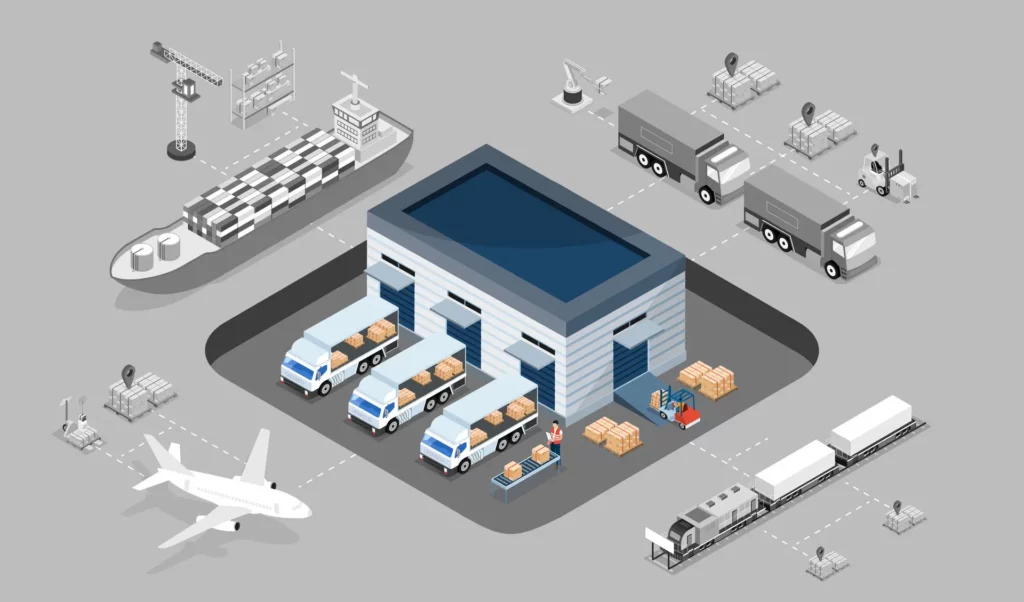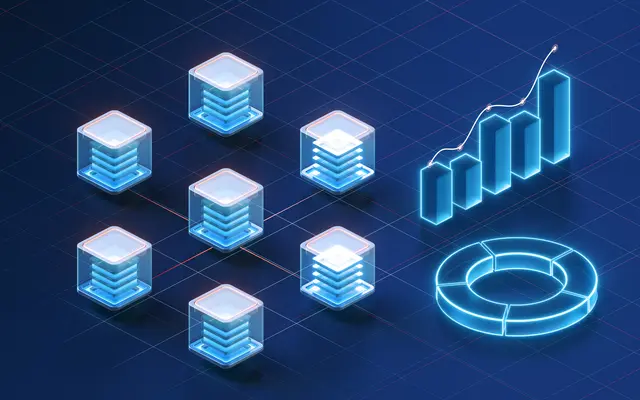Revolutionizing Returns Processing: A Journey Towards Efficiency and Accuracy
In the ever-evolving landscape of supply chain management, Returns Processing Automation has emerged as a game-changer, promising to streamline operations and enhance efficiency. This cutting-edge technology empowers businesses to automate the initiation, validation, and processing of product returns and exchanges, eliminating manual errors and delays. By leveraging the power of Python, AI, and cloud-based solutions, Returns Processing Automation offers a comprehensive solution that addresses the challenges faced by businesses in the supply chain industry.
The Imperative of Streamlining Returns Processing
Returns processing is an integral part of supply chain operations, posing significant challenges for businesses. Manual processes can lead to errors, delays, and inconsistencies, impacting customer satisfaction and operational efficiency. Returns Processing Automation addresses these challenges head-on, providing a robust and automated solution that streamlines the entire process.
Harnessing the Power of Technology
Python, AI, and cloud-based solutions form the backbone of Returns Processing Automation. Python’s versatility and open-source nature make it an ideal choice for developing scalable and customizable automation scripts. AI algorithms enable intelligent decision-making, automating the validation of return eligibility and determining the appropriate action for returned items. Cloud-based solutions provide the necessary infrastructure and scalability to handle high volumes of return requests and manage complex supply chain operations.

Python, AI, and the Cloud: A Symbiotic Partnership for Returns Processing Automation
Python, AI, and cloud-based solutions form a powerful triumvirate, enabling businesses to achieve unprecedented levels of efficiency and accuracy in their returns processing operations.
Unleashing the Potential of Unattended Bots
Python’s versatility and open-source nature make it an ideal choice for developing unattended bots that can automate repetitive and time-consuming tasks in the returns processing workflow. These bots can be programmed to handle a wide range of tasks, including:
- Processing return requests and generating return authorization numbers
- Validating return eligibility based on predefined criteria
- Generating shipping labels and tracking return shipments
- Updating inventory records and initiating refunds or replacements
- Sending automated notifications to customers throughout the process
Harnessing the Power of Attended Bots
Attended bots, also developed using Python, provide an additional layer of customization and flexibility to the returns processing automation process. These bots can work alongside human agents to assist with complex or time-sensitive tasks, such as:
- Handling customer inquiries related to returns
- Processing returns that require manual inspection or approval
- Escalating complex cases to supervisors or managers
The Cloud: A Scalable and Feature-Rich Orchestrator
Cloud-based platforms offer a comprehensive suite of features and capabilities that far surpass those of traditional RPA/workflow tools orchestrators. These platforms provide:
- Scalability: The ability to handle high volumes of return requests without compromising performance
- Reliability: Guaranteed uptime and data security
- Flexibility: The ability to customize and integrate with existing systems
- Advanced Analytics: Tools for analyzing return trends and identifying areas for improvement
AI: Enhancing Accuracy and Handling Edge Cases
AI algorithms play a crucial role in improving the accuracy and efficiency of returns processing automation. These algorithms can be used to:
- Classify return reasons: Automatically categorize return requests based on predefined criteria, such as product defect, incorrect order, or change of mind
- Detect fraud: Identify and flag suspicious return requests
- Handle edge cases: Automate the processing of complex or unusual return requests that may not fit into predefined rules
Specific AI techniques that can be applied to returns processing automation include:
- Image recognition: Inspecting returned items for damage or defects
- Natural language processing (NLP): Analyzing customer feedback and extracting relevant information
- Generative AI: Generating automated responses to customer inquiries
By leveraging the combined power of Python, AI, and cloud-based solutions, businesses can achieve a truly transformative returns processing automation solution that streamlines operations, reduces costs, and enhances customer satisfaction.

Building the Returns Processing Automation: A Step-by-Step Guide
Developing a robust and effective Returns Processing Automation solution using Python and cloud-based technologies involves the following steps:
1. Process Analysis
Begin by thoroughly analyzing the existing returns processing workflow to identify opportunities for automation. This includes mapping out each step in the process, identifying bottlenecks, and determining which tasks are suitable for automation.
2. Data Integration
Integrate the automation solution with relevant data sources, such as customer relationship management (CRM) systems, inventory management systems, and shipping carriers. This ensures that the automation has access to real-time data and can make informed decisions.
3. Automation Development
Use Python to develop custom scripts that automate specific tasks in the returns processing workflow. These scripts can be designed to handle tasks such as:
- Validating return requests
- Generating return authorization numbers
- Creating shipping labels
- Updating inventory records
- Initiating refunds or replacements
4. AI Integration
Incorporate AI algorithms into the automation solution to enhance accuracy and handle edge cases. For example, AI can be used to:
- Classify return reasons
- Detect fraud
- Generate automated responses to customer inquiries
5. Cloud Deployment
Deploy the automation solution on a cloud platform to ensure scalability, reliability, and security. Cloud platforms also provide access to advanced analytics tools that can be used to monitor the performance of the automation and identify areas for improvement.
Data Security and Compliance
Data security and compliance are paramount in the supply chain industry. The Returns Processing Automation solution must be designed to protect sensitive customer data and comply with industry regulations. This includes implementing appropriate encryption, access controls, and audit trails.
Advantages of Python over No-Code RPA/Workflow Tools
While no-code RPA/workflow tools offer a quick and easy way to automate tasks, they often lack the flexibility and scalability required for complex returns processing operations. Python, on the other hand, provides:
- Greater flexibility: Python allows for the development of custom scripts that can be tailored to specific business requirements.
- Enhanced scalability: Python scripts can be easily scaled to handle high volumes of return requests.
- Improved performance: Python is a high-performance programming language that can execute automation tasks quickly and efficiently.
Algorythum’s Approach
Algorythum takes a different approach to returns processing automation, recognizing the limitations of off-the-shelf RPA/workflow tools. Our team of experts leverages Python and cloud-based technologies to develop customized solutions that meet the unique requirements of each client. This approach ensures that our clients achieve maximum efficiency, accuracy, and compliance in their returns processing operations.

The Future of Returns Processing Automation
The future of Returns Processing Automation holds exciting possibilities for businesses looking to further enhance their supply chain operations. Here are a few potential extensions to the proposed solution:
- Integration with AI-powered chatbots: Chatbots can be integrated into the automation solution to provide real-time support to customers and answer common questions about the returns process.
- Blockchain technology: Blockchain can be used to create a secure and transparent record of all return transactions, enhancing traceability and accountability.
- Predictive analytics: Predictive analytics can be used to identify trends in return patterns and forecast future demand for returns processing services.
Subscribe to Our Newsletter
Stay up-to-date on the latest trends and innovations in returns processing automation by subscribing to our newsletter. We regularly share insights, case studies, and best practices to help businesses optimize their supply chain operations.
Contact Us for a Free Feasibility and Cost Estimate
Contact our team of experts today to schedule a free feasibility assessment and cost estimate for your custom returns processing automation solution. We will work with you to understand your unique requirements and develop a tailored solution that meets your specific needs.
By embracing these future technologies and partnering with Algorythum, businesses can unlock the full potential of Returns Processing Automation and achieve unprecedented levels of efficiency, accuracy, and customer satisfaction in their supply chain operations.

Algorythum – Your Partner in Automations and Beyond
At Algorythum, we specialize in crafting custom RPA solutions with Python, specifically tailored to your industry. We break free from the limitations of off-the-shelf tools, offering:
- A team of Automation & DevSecOps Experts: Deeply experienced in building scalable and efficient automation solutions for various businesses in all industries.
- Reduced Automation Maintenance Costs: Our code is clear, maintainable, and minimizes future upkeep expenses (up to 90% reduction compared to platforms).
- Future-Proof Solutions: You own the code, ensuring flexibility and adaptability as your processes and regulations evolve.









